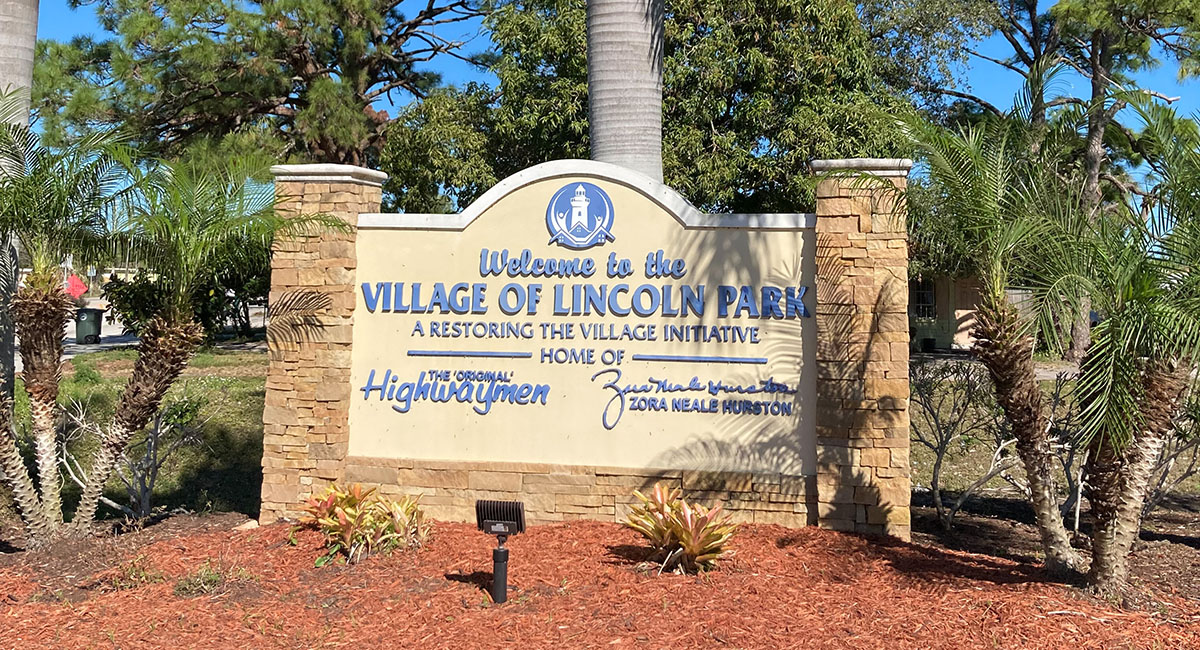REBIRTH OF A NEIGHBORHOOD

It takes a village to rebuild a community
BY ANTHONY WESTBURY
Larry Lee Jr. and Alvin Miller grew up in the Lincoln Park area in the 1960s and ’70s. They remember their neighborhood fondly as a place where everyone knew and looked out for each other.
In recent years, however, the northwest area of Fort Pierce has been plagued by gangs, violence and an unraveling of community bonds. Strangers live next to strangers and many residents find it easier to turn a blind eye to the deteriorating conditions around them than to do anything to improve things.
In 2013, Lee was state representative for District 84 and decided to use his influence in Tallahassee to try to turn around his old neighborhood. His childhood friend, Miller, was one of the first to join the effort.
Miller and Lee talked at length about what had gone wrong in Lincoln Park and many other predominantly African American neighborhoods.
As Miller remembers it, Lincoln Park “was a mecca. There were lots of African American businesses on avenues D and E and on 25th Street. It was a close-knit community where neighbors watched over each other. There was no fear in northwest Fort Pierce in those days.”

EVERYTHING CHANGED
Before 1968, the black business district had almost everything citizens needed: grocery stores, drug stores, Richards department store, Lewis’ grocery store, a movie theater, Sammy’s Shoes and an ice cream parlor.
Then, Lee said, 1968 happened. The assassination of Dr. Martin Luther King Jr. ignited riots across America, including Fort Pierce. The desegregation of schools required under the Civil Rights Act that year was met with student riots and protests at Fort Pierce Central High School and Dan McCarty Middle School.
Many white-owned businesses in Lincoln Park shut down in response to the upheaval and never returned. By the 1970s, the rot had escalated even further. Lee, back in town after college and a pro football career that stalled due to injuries, recalled how the area had become too dangerous even for the police department, which relocated to tamer territory off South U.S. 1.
Lee said once he’d been elected to the state legislature, he spoke with Miller about initiating a new start to reset Lincoln Park’s direction.
And so the Restoring the Village initiative was born.
“It was Alvin who came up with the name,” Lee said. “I wanted the churches to get involved in the effort, but they were too divided internally. So I called on Alvin as an ordained minister to maintain unity.”
A well-attended town hall meeting at Lincoln Park Academy that year demonstrated the public’s thirst for change. More than 800 residents and representatives of community organizations attended and loudly applauded the formation of Restoring the Village.
In the years since, the movement has strengthened and deepened that support and major changes have resulted. Through close collaboration between local institutions, churches, government agencies, local businesses and residents, the ball has begun rolling to rebirth the community into the caring, inclusive and nurturing place it once was. Along the way it has built achievers within the community.
According to the initiative’s website, restoringthevillage.com, the group aims to instill self-awareness, foster community pride, promote higher educational standards, support local entrepreneurship and engage children in positive activities that stress critical care core values.
CREATING INTEREST


To date, Restoring the Village’s achievements have attracted attention from other predominantly black communities who want to emulate the rebirth process happening in Fort Pierce.
“The Civil Rights Act of 1968 changed everything,” Lee noted. “Along with all the good results of that legislation, black communities lost out. Desegregation brought mixed schools and young blacks resented losing their teachers and their closeness to the community. Many felt lost and angry in the new system.”
“We lost control of managing our affairs and our neighborhood,” Miller agreed. “We used to have black cops, teachers, leaders.”
Restoring the Village is continuing to achieve its mission with the creation of the Lighthouse Youth Development Complex in partnership with the Boys & Girls Club. The complex will encompass an initial 7,500-square-foot building that will provide a safe place for youth needing academic support, career guidance and work readiness training.
The project will also include a six-hole golf course, a putt-putt course, pickleball fields and meeting and special event space. The Boys & Girls Club is partnering with Indian River State College to develop a sound business plan for the project, set for a site north of Avenue Q.
As its website states, Restoring the Village sees its mission “like a garden. We water the garden often. We remove weeds, fertilize, prune dead branches and plant new plants in order to make our garden grow and become a beautiful place. Our goal is to create a sense of community pride.”
The decorative gateways to Lincoln Park provide a concrete example of the scope of the project and hopefully create a sense of pride in residents.
The initiative’s vision still is a work in progress, but it has received enthusiastic buy-in from community members and local businesses.
The fruits of creating [or recreating] a better, more caring community are revealed every day as the roots of the effort dig deeper into the soil of northwest Fort Pierce.
See the original article in print publication
© 2023 Fort Pierce Magazine | Indian River Magazine, Inc.
